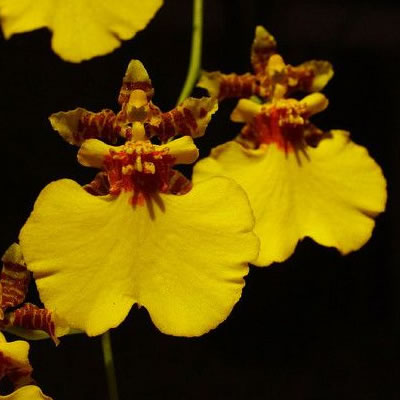North of England Orchid Society -
An introduction to oncidium orchid culture...
ONCIDIUM ORCHIDS
Are a very large genus which grow naturally throughout the tropical zones of the American Continent and Caribbean.
Often referred to as Dancing Lady Orchids, because of the similarity to some of their flowers to a Latin American dancer.
Identification of variety.
Look for pseudobulbs which are green and have long racemes these have small golden yellow flowers sometimes with red/brown horizontal striping or brwny yellow. They may have very dominany deep red colouration and others have white or pink blooms.
Others can have very small pseudobulbs with very stiff erect leaves. The leaves are a water reserve for the plant. The racemes aare long bearing yellow flowers which spread out from the top of the plant originally referred to as mule eared orchids, they are more recently classified as Psychopsis orchids.
Then there are the equitant oncidiums which have no pseudoblubs but triangular to oval broad fleshy leaves which again operate as a water reservoir. The flowers have the mostexquisite coloration, more recently they have been re classified at Tolumnia.
Finally there is another tyoe which has long winding flower stem reaching over 20feet these are classified as Cyrtochilum.

